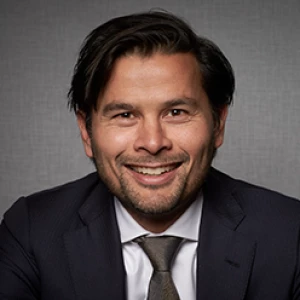This article is part of an ongoing series exploring changes in the workplace and in the nature of work. The first piece explored 12 megatrends , such as automation, big data, demographics, and diversity, that are revolutionizing the way work gets done. Subsequent publications will explore digital governance, talent, and culture.
The success of a transformation depends on an organization’s leaders, especially the CEO. In digital transformations , the CEO is even more critical because of the magnitude of change, the degree of disruption, and the power of inertia.
Digital transformation requires new ways of working, not just new technology. The scarcest resource at many companies is not necessarily technological know-how but leadership. Leaders need the ability to sift through an avalanche of digital initiatives, manage accelerating innovation cycles, and reshape the organization around new approaches such as agile.
Here are five golden rules of digital transformation for CEOs to follow.
Learn from the Outside but Stay True to Your DNA
Established companies need to embrace the innovations that are powering the digital economy. Digital natives such as Uber, Airbnb, and Spotify, for example, have successfully attacked the taxi, lodging, and music industries by meeting customer needs in new ways and taking advantage of technological innovation. Equally important, these companies have created new operating models and cultures.
Incumbents need to learn from the successes of these attackers, not assume that such lessons don’t apply or make only slight adjustments to the status quo. CEOs should carefully study how they can broadly apply new ways of working, new levels of customer service, and new technology platforms to their own organization. It’s not enough to take a quick road trip to Silicon Valley or Bangalore or put a tech executive on the board of directors.
At the same time, companies should not abandon their Ralph Hamers on Disrupting the Banking Industry . An organization that has been around for 50 or 100 years or more has enduring and proven qualities that do not just vanish in the digital age. The turnaround of the LEGO Group, for example, one of the most famous business stories of this century, was conceived as both a bridge to the digital future and a return to the past. “LEGO had lost its focus and its core…. What was it really that this company did better than anybody else?,” recalled Jørgen Vig Knudstorp , the CEO who orchestrated the transformation. “There’s an incredible community around the LEGO brand and the LEGO brick, and we didn’t nurture it well. Those were the things we started addressing, and that led us on an incredible journey of very strong growth for more than a decade.”
Follow the Map, Trust the Terrain
Vision creates intention and establishes direction and ambition. Plans lay out responsibility and deliverables. Vision and plans are both critical requirements in a transformation. But digital transformations require room for course corrections. It’s impossible to button up every last detail and identify the transformation’s precise landing place.
Leaders, in other words, need to articulate a broad strategic outline and the purpose and context for change. But they also need to be open to feedback from people in the organization, from customers, and from partners. They need to be able to course correct. We call this approach adaptive leadership .
Adaptive leadership is not code for indecisive leadership. One commonsense way to become more adaptive is to perform more frequent reviews. Quarterly business reviews replace annual planning cycles. Course corrections happen weekly or even daily instead of monthly.
Another commonsense idea is to force face-to-face interactions to resolve differences. ING, the bank based in the Netherlands, has hardwired these interactions into decision making by running its digital transformation from an Obeya room. The room is “the heart of ING’s transformation ,” says Roel Louwhoff, the bank’s chief operating officer and chief transformation officer. “The purpose is simple: having a full overview of the status of all projects and solving issues quickly. If an issue can’t be solved in five minutes, it’s escalated to the next level.”
Place Many Bets
In the same way that leaders must establish a broad vision but allow for improvisation, they also need to take more than one approach to digital transformation. The level of volatility and ambiguity in the market makes it impossible for leaders to know precisely what will work and what technological and analytical capabilities they may need to acquire. There are at least two types of bets that companies should consider:
- Open Innovation. Companies that have successfully transformed themselves generally participate in broader digital, innovation, and mobile ecosystems. They tap into developments beyond the organization and let outsiders improve upon their bundle of products and services. In open-banking initiatives, for example, many banks publish APIs, or entryways into their software, that allow financial technology startups to build add-on services.
- Portfolio Construction. In terms of deal making, partnering, and venturing, digital transformations are built on many small, manageable bets. Companies should evaluate dozens of different approaches, investments, and partnerships; pilot or incubate a few; and then build and scale up only the most promising. These exercises need to occur in the context of the overall vision. “Let a thousand flowers bloom” is a nice slogan, but it can be a recipe for losing focus and wasting resources.
Digitize the Organization
A digital strategy is only as good as the organization attempting to execute it. Companies need to do hundreds of things right to create a digital organization, but three stand out above the rest.
The first is how best to ensure momentum and success. Ideally, the CEO and senior and business line leaders will drive the digital transformation. But for some companies, especially those just beginning the journey, it may make sense to appoint a digital leader who temporarily drives and coordinates all digital activities.
The more disruptive the initiative, the more the CEO and digital leader will need to free the organization from the shackles of legacy and habit. One way to do this is to create an organizational structure for new business ideas that—consistent with what we call the “rule of level plus two”—temporarily reports two levels above its natural home to ensure support and visibility.
The second issue is the related but broader question of what to centralize and what to decentralize: where will digital resources be located within the organization and how they will be managed? The “right” answer depends on a complex interplay of forces. Either way, the CEO will need to manage the tradeoffs between standardization and experimentation and create roles and decision rights for digital activities. Many companies start with a bias toward centralization but, as the organization’s overall digital capabilities improve, digital resources eventually move to the business lines and regional businesses. When this happens, the role of the chief digital officer often disappears.
Finally, leaders must introduce agile ways of working into their organization. For traditional leaders who rose step by step along a hierarchy, agile can be disorienting. By design, agile teams are fast, cross-functional, experimental, and self- directed. It’s one thing to have a few agile pilot teams but quite another for large parts of a global organization to be agile.
The role of leaders fundamentally changes in an agile organization. They need to learn new behaviors and let go of old habits. Agile, for example, is built on employee empowerment rather than rigid hierarchy and governance. Leaders in an agile organization set the context and purpose, ensure alignment, and enable autonomy. Finding the balance between alignment and autonomy is the ultimate test of leadership during a digital transformation.
Build a Talent Pipeline
If a digital strategy is only as strong as the organization that executes it, it is likewise only as effective as the people who execute it. Talent, almost always on a CEO’s short list of top concerns, becomes even more critical during a digital transformation.
While it may be tempting to staff digital initiatives exclusively with outside hires, a more promising approach is to train current staff in digital capabilities. Several companies have created in-house academies or digital centers that train employees in specific capabilities, such as artificial intelligence and analytics, as well as in new ways of working, such as agile, that are conducive to digital activities. After training, which generally lasts a few months, these employees return to their line positions armed with new skills and new approaches. Of course, for some positions, companies may need to go outside to hire talent. But given the level of competition for employees with technology backgrounds, that should be done only selectively.
Conventional wisdom suggests that transformations are marathons requiring discipline and restraint. But digital transformations are different. The pace can be unrelenting. The goals may be more ambiguous than those of a traditional transformation. There may be more need for outside support. CEOs may need to act fast when fast decisions are required. They may need to act on more imperfect information than is their custom. They may need to work in ways that they view as “un-CEO-like.” But in the age of agile, CEOs can’t expect their teams to sprint if they just keep jogging.









